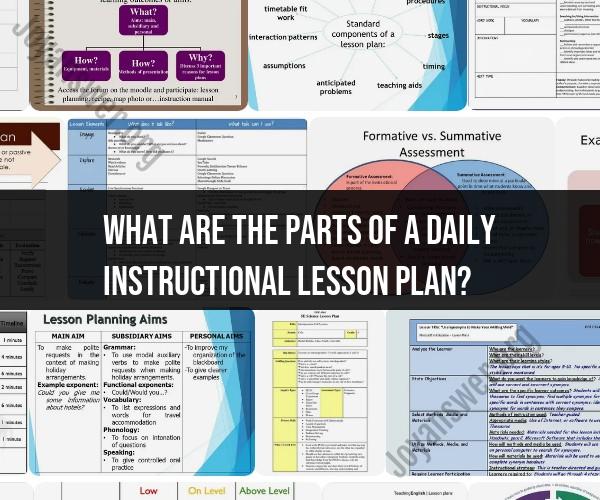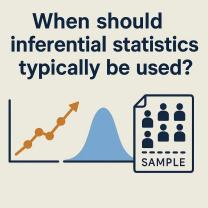What are the parts of a daily instructional lesson plan?
A comprehensive daily instructional lesson plan outlines the structure and details of a single teaching session. It provides a roadmap for educators to effectively deliver content, engage students, and achieve learning objectives. Here are the key elements typically included in a comprehensive daily instructional lesson plan:
1. Lesson Title:Provide a clear and descriptive title that reflects the topic or focus of the lesson.
2. Grade Level/Class:Indicate the grade level or class for which the lesson is intended.
3. Date and Duration:Specify the date the lesson will be taught and the expected duration of the lesson.
4. Learning Objectives:State the specific learning objectives that students are expected to achieve by the end of the lesson. Learning objectives should be specific, measurable, achievable, relevant, and time-bound (SMART).
5. Prior Knowledge:Briefly recap what students should already know before starting the lesson. This helps activate prior knowledge and create connections.
6. Materials and Resources:List all the materials, resources, and tools you'll need for the lesson. This may include textbooks, worksheets, multimedia presentations, props, and more.
7. Teaching Methodology:Outline the teaching strategies and methods you'll use to deliver the lesson content. This might include lectures, discussions, group activities, demonstrations, or hands-on experiments.
8. Introduction (Engagement):Engage students and introduce the lesson's topic by posing thought-provoking questions, sharing an interesting fact, or using a relevant real-world example.
9. Main Content/Instruction:Present the main content of the lesson. Break down complex concepts into manageable sections and provide clear explanations. Use visuals, examples, and analogies to enhance understanding.
10. Activities and Practice:Incorporate interactive activities, discussions, or exercises that allow students to apply what they've learned. These activities should align with the learning objectives.
11. Differentiation and Adaptations:Indicate any differentiation strategies or adaptations you'll use to address the diverse needs of students, including those with different learning styles or abilities.
12. Assessment/Evaluation:Detail how you'll assess student understanding and progress. This can include formative assessments during the lesson and summative assessments at the end.
13. Closure:Summarize the key points of the lesson and reinforce the main takeaways. Provide a clear conclusion that ties the lesson back to the learning objectives.
14. Homework/Extension:Specify any homework assignments or extension activities that students should complete outside of the classroom to reinforce learning.
15. Reflection/Feedback:Reflect on the lesson after it's taught. What went well? What could be improved? This reflection can help you refine your teaching strategies for future lessons.
16. Integration and Cross-Curricular Connections:Highlight any opportunities to integrate the lesson's content with other subjects or skills, promoting interdisciplinary learning.
A comprehensive daily instructional lesson plan helps teachers maintain structure and purpose in their teaching, ensuring that all essential components are covered while promoting effective student engagement and learning.












